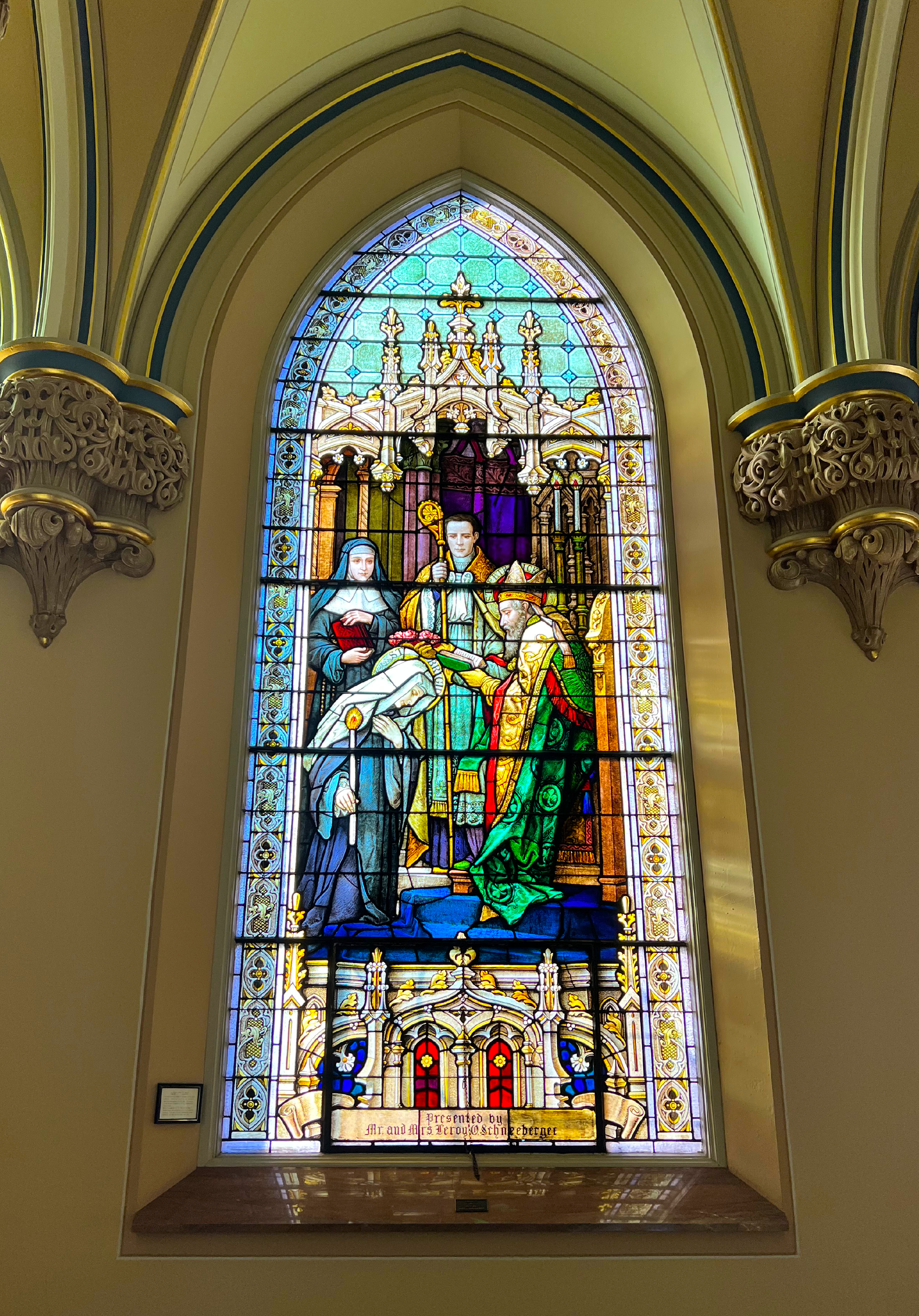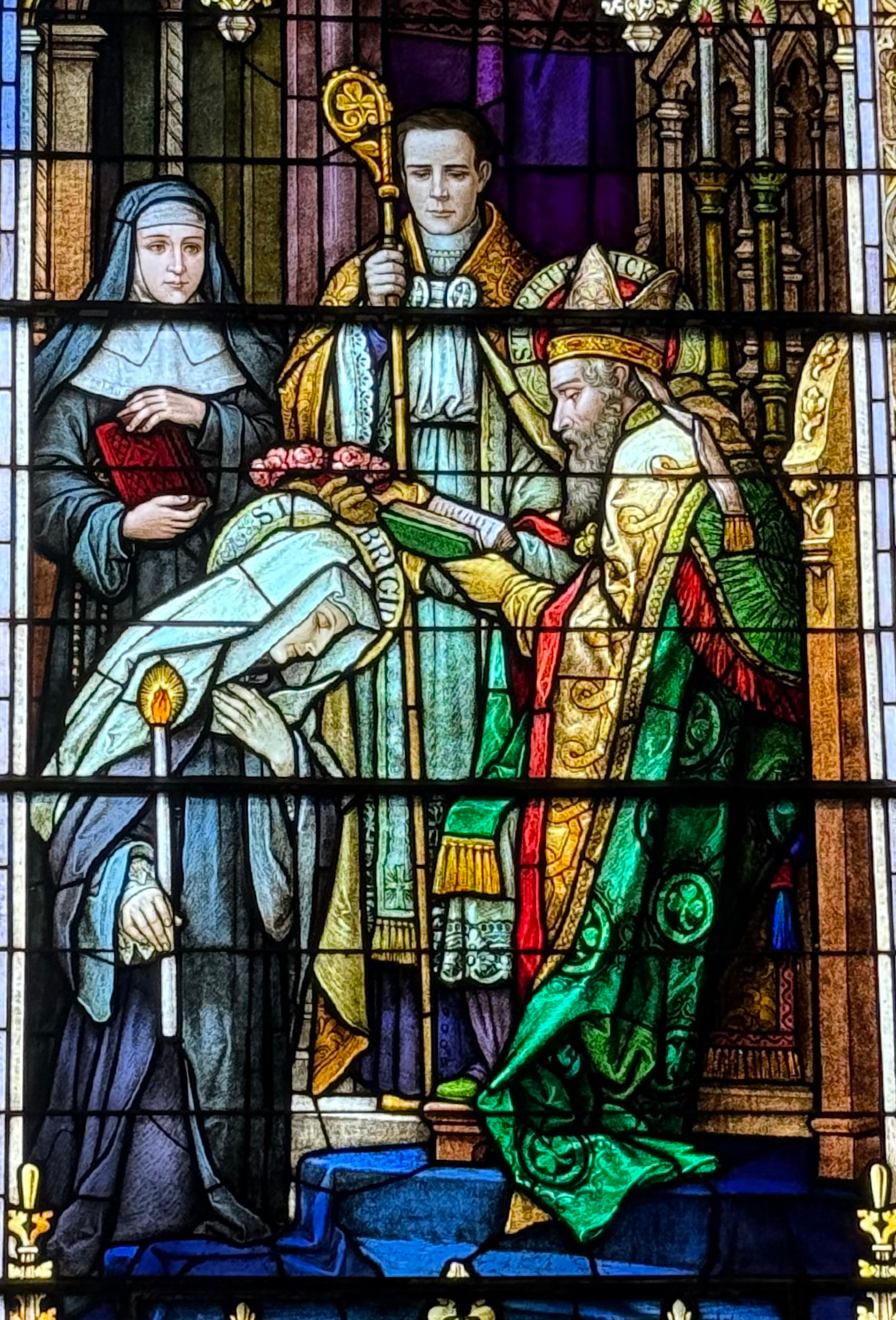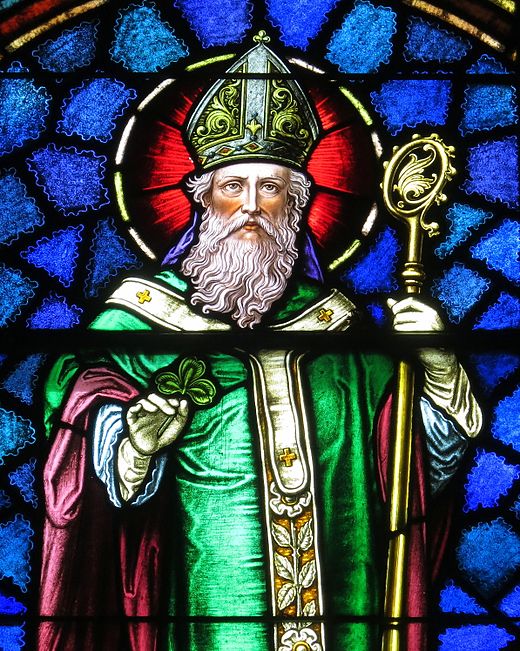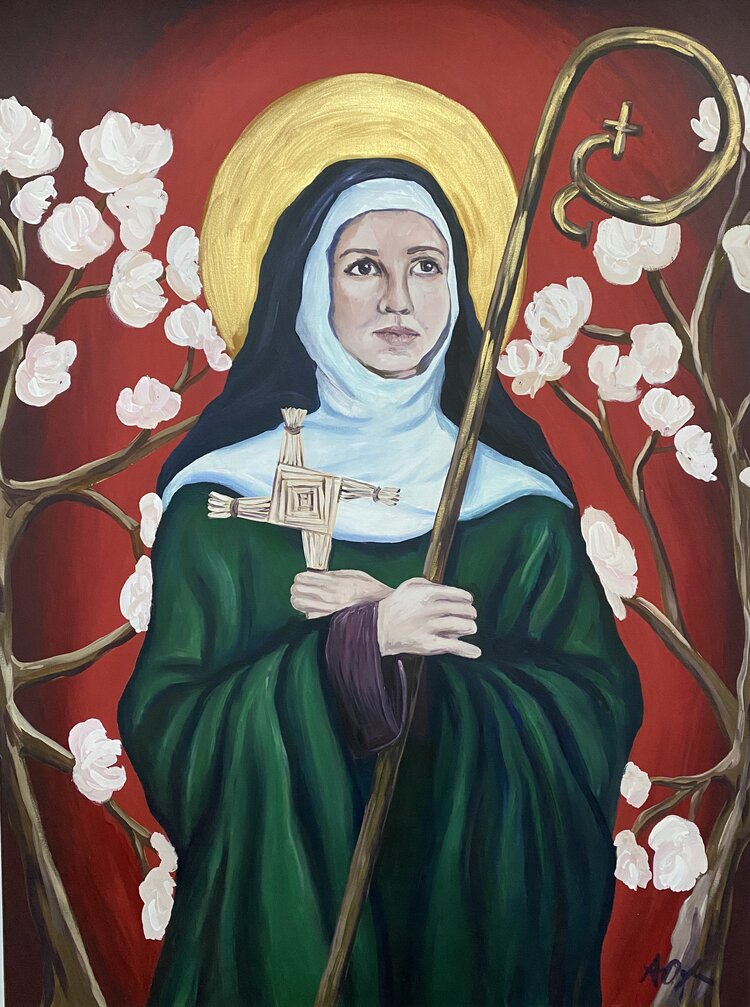
St. Patrick 389-461 St. Brigid 451-532. The scene of this window is legendary as the dates indicate. Patrick was one of the most successful Christian missionaries of all time. The nation of Ireland was converted by him in approximately thirty years.
Brigid is known as the "St. Mary of the Gael." Records about her are overlaid with much legendary material. That her faith was outstanding is supported by the many writings of her life.

Presented by Mr. And Mrs. Leroy O. Schneeberger



Stained glass window from Saint Patrick Catholic Church, Junction City, Ohio
Painting by Alexandra Ogle-Ottinger, 2019
Introduction
"St. Patrick Crowning St. Brigid" is a renowned painting that holds significant historical and cultural importance, capturing a pivotal moment in the Christian history of Ireland. This artwork depicts the legendary event where St. Patrick, the patron saint of Ireland, crowns St. Brigid, one of Ireland’s most revered female saints. Both figures are central to Irish history and Christianity, symbolizing the spiritual foundation of the nation.
Historical Background
St. Patrick is celebrated for his role in bringing Christianity to Ireland during the 5th century. His work in converting the Irish from paganism to Christianity is legendary, and he is credited with using the shamrock to explain the concept of the Holy Trinity. St. Brigid, on the other hand, is known for her piety and charity and is considered a patroness of Ireland along with St. Patrick. She founded several monasteries, the most famous being in Kildare.
Artwork Analysis
This painting, often attributed to an unknown artist from the medieval period, is rich with symbolism. The setting is typically a serene, pastoral landscape, reflecting Ireland's lush terrain. St. Patrick is usually portrayed in bishop attire, signifying his ecclesiastical authority. The act of crowning St. Brigid represents the recognition and validation of her leadership and spiritual influence.
-
St. Patrick's Depiction: He is often shown holding a crozier, symbolizing his role as a shepherd of his people. His gesture of crowning signifies the sanctity and respect he had for Brigid’s contributions to the church.
-
St. Brigid's Depiction: She is frequently depicted in a humble, yet regal manner, symbolizing her dual role as a servant of God and a leader in her own right. Her attire is simple, reflecting her vows of poverty and humility.
